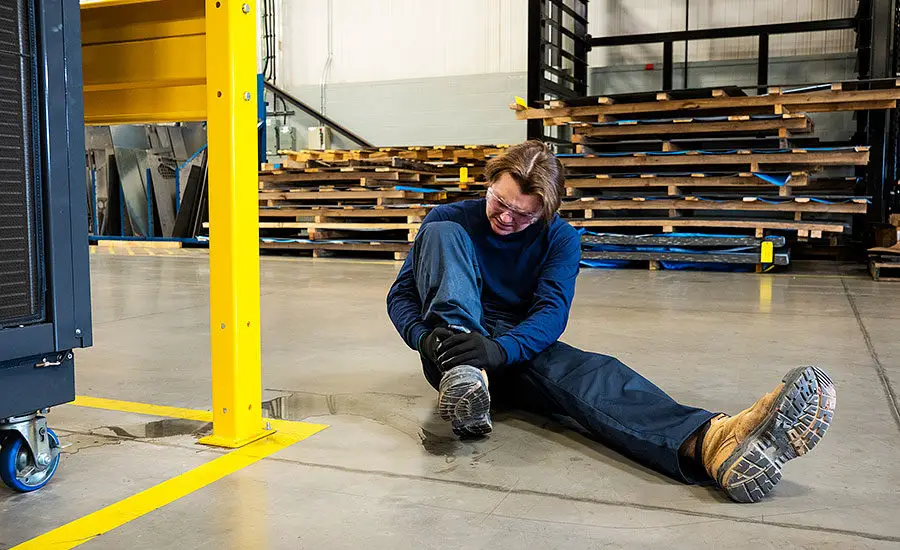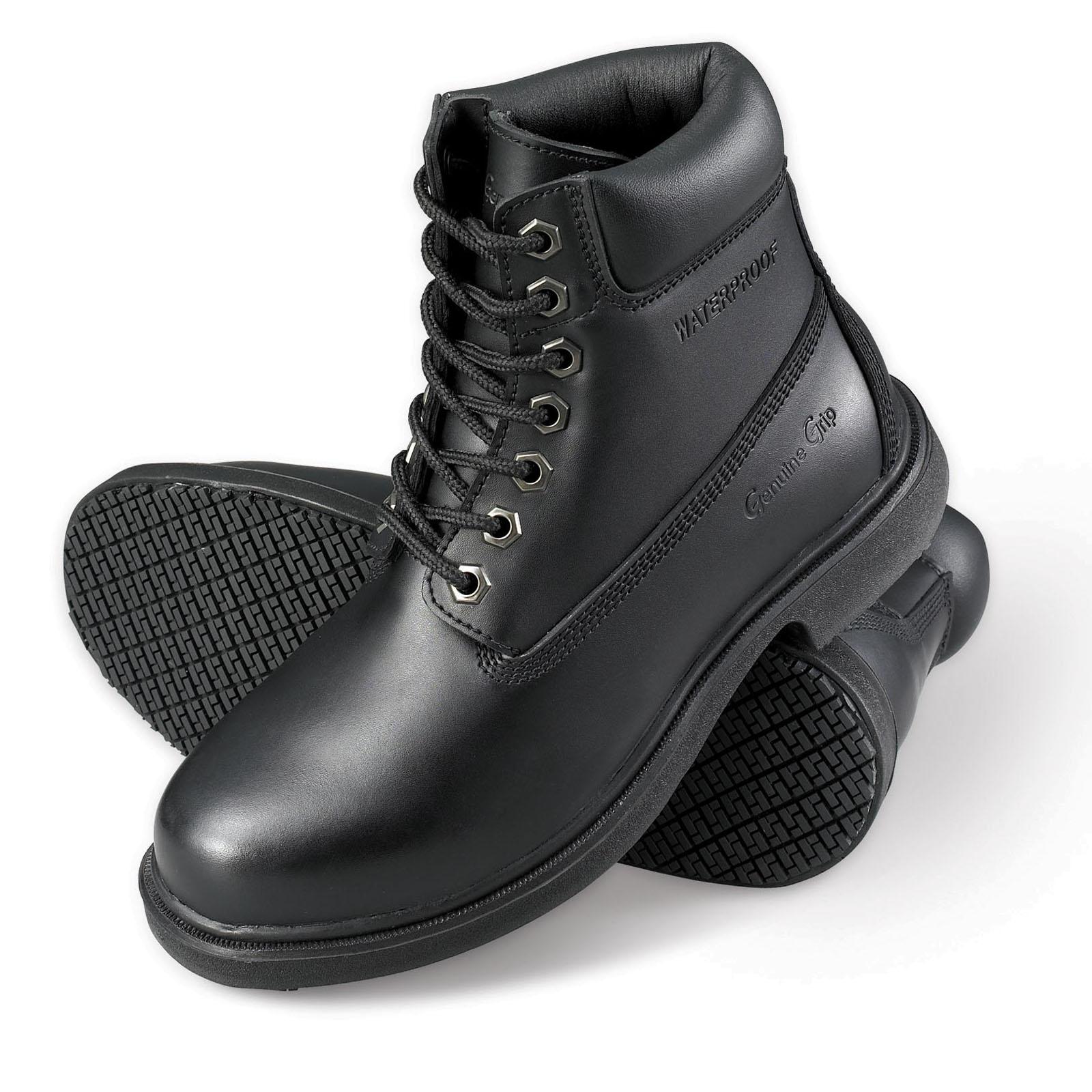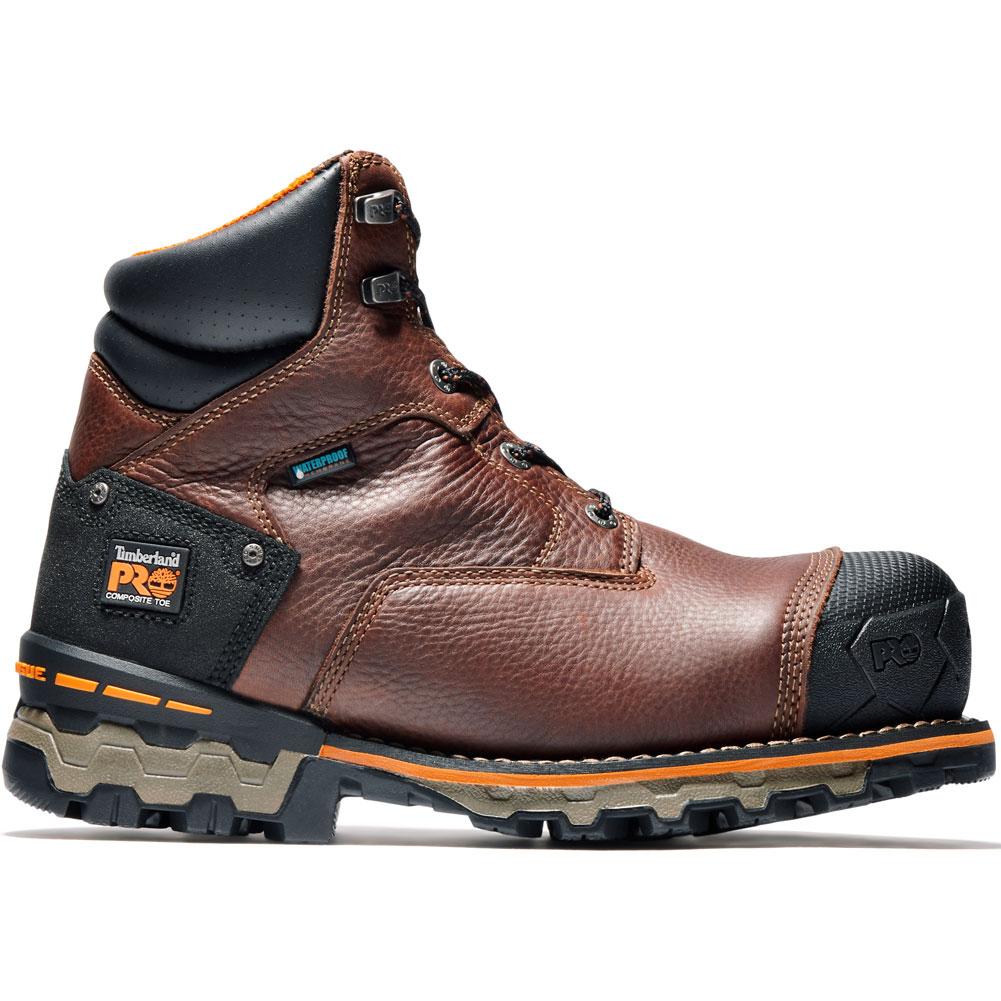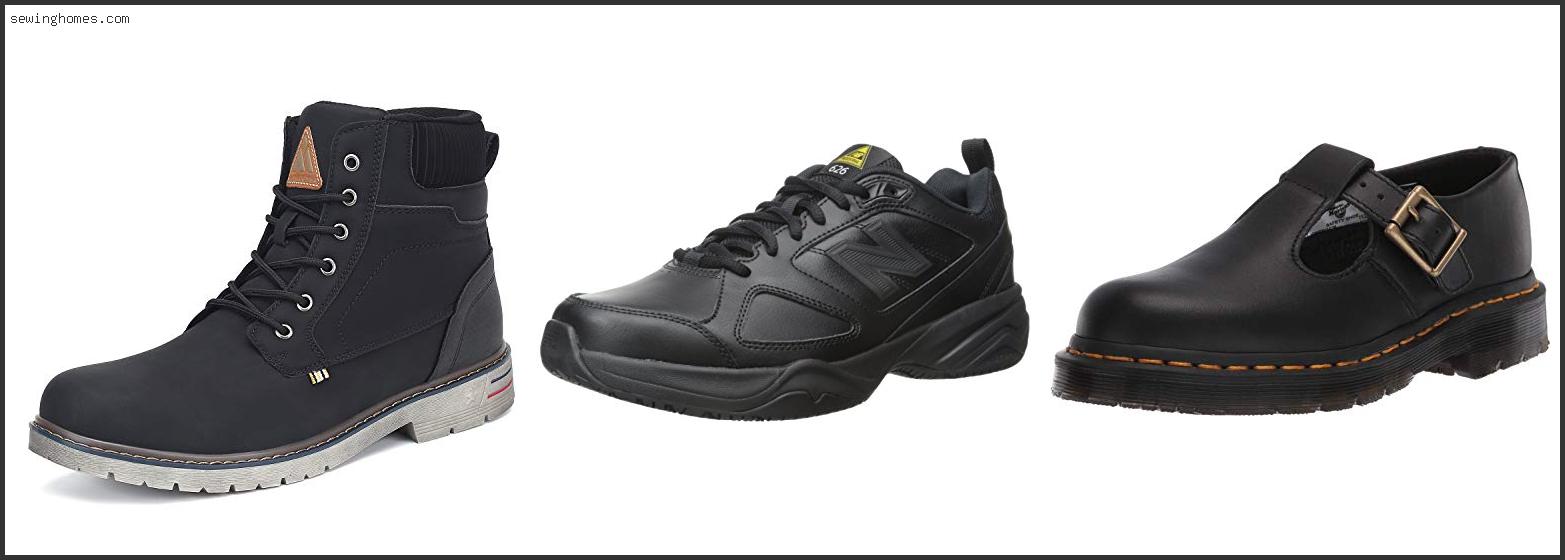Slip, Trip, and Fall: The Hidden Dangers of the Workplace
Workplace safety is a critical aspect of any occupation, and one of the most common hazards that workers face is the risk of slips, trips, and falls. According to the Occupational Safety and Health Administration (OSHA), slips, trips, and falls are the leading cause of workplace accidents, resulting in thousands of injuries and fatalities every year. These accidents can occur in any industry, from construction and manufacturing to healthcare and hospitality, and can have devastating consequences for workers and their families.
The importance of proper footwear in preventing these accidents cannot be overstated. Wearing the best slip-resistant work boots can significantly reduce the risk of slips, trips, and falls, and can help to ensure a safe working environment. In fact, OSHA recommends that employers provide workers with personal protective equipment, including slip-resistant footwear, to mitigate the risk of workplace accidents.
By investing in high-quality, slip-resistant work boots, workers can enjoy a safer and more confident working experience. Whether you’re working on a construction site, in a hospital, or in a factory, the right footwear can make all the difference in preventing accidents and ensuring a safe return home at the end of the day.
What Makes a Boot Slip-Resistant?
A slip-resistant work boot is not just a matter of aesthetics; it’s a critical component of workplace safety. But what makes a boot truly slip-resistant? The answer lies in its design and materials. A good slip-resistant boot should have a combination of features that work together to provide superior traction and stability.
One of the most important factors is the outsole material. Look for boots with outsoles made from high-quality rubber compounds that are specifically designed to provide excellent grip on various surfaces. The tread pattern is also crucial, as it helps to channel water and debris away from the foot, reducing the risk of slipping. Deep lugs and aggressive tread patterns are often used in best slip-resistant work boots to provide maximum traction.
Other design elements that contribute to a boot’s slip resistance include the midsole and insole. A sturdy midsole provides additional support and stability, while a breathable insole helps to keep the foot dry and comfortable. Some boots may also feature additional features such as slip-resistant coatings or specialized sole designs that enhance traction.
When shopping for slip-resistant work boots, look for boots that meet or exceed industry standards for slip resistance, such as those set by the American Society for Testing and Materials (ASTM). Additionally, consider the specific hazards and challenges of your workplace and choose a boot that is designed to meet those needs.
How to Choose the Right Slip-Resistant Work Boots for Your Job
Selecting the right slip-resistant work boots for your job can be a daunting task, especially with the numerous options available in the market. However, by considering a few key factors, you can make an informed decision and ensure that you’re getting the best slip-resistant work boots for your specific needs.
First and foremost, consider the job requirements and work environment. If you work in a hazardous environment with oil, chemicals, or other slippery substances, you’ll need boots with a high level of slip resistance. On the other hand, if you work in a dry, clean environment, you may not need boots with the same level of slip resistance.
Next, think about the specific hazards you face on the job. For example, if you work in construction, you may need boots with additional features such as steel toes and ankle support. If you work in healthcare, you may need boots that are easy to clean and disinfect.
Personal preferences also play a role in selecting the right slip-resistant work boots. Consider factors such as comfort, fit, and style. Do you prefer boots with a lace-up or slip-on design? Do you need boots with insulation for cold weather or breathable materials for warm weather?
Some occupations may require specific features or certifications. For example, boots for electricians may need to meet ASTM standards for electrical hazard protection. Boots for firefighters may need to meet NFPA standards for heat and flame resistance.
Finally, consider the brand and quality of the boots. Look for brands that specialize in slip-resistant work boots and have a reputation for producing high-quality products. Read reviews and talk to colleagues to get a sense of how well a particular boot performs in real-world conditions.
By considering these factors, you can find the best slip-resistant work boots for your job and ensure that you’re protected from the risks of slips, trips, and falls.
Top Picks: The Best Slip-Resistant Work Boots on the Market
When it comes to finding the best slip-resistant work boots, there are numerous options available in the market. To help you make an informed decision, we’ve reviewed and compared top-rated slip-resistant work boots from leading brands like Timberland, Dr. Martens, and Thorogood.
Timberland PRO Boondock Work Boots: These boots feature a rugged outsole with deep lugs for excellent traction, making them ideal for construction and outdoor work. They also have a breathable mesh lining and a comfortable toe box for all-day wear.
Dr. Martens Ironbridge Work Boots: With their iconic air-cushioned sole, these boots provide superior comfort and support. They also feature a slip-resistant outsole and a durable leather upper that can withstand harsh work environments.
Thorogood American Made Work Boots: These boots are designed for heavy-duty work, with a rugged outsole and a sturdy leather upper. They also feature a comfortable insole and a breathable lining for all-day wear.
Irish Setter Work Boots: These boots feature a rugged outsole with a unique tread pattern for excellent traction on various surfaces. They also have a comfortable insole and a breathable lining for all-day wear.
When choosing the best slip-resistant work boots for your job, consider factors like job requirements, work environment, and personal preferences. By selecting the right boots, you can reduce the risk of slips, trips, and falls and ensure a safe and healthy work environment.
Remember, the right work boots can make all the difference in preventing workplace accidents. By investing in a high-quality pair of slip-resistant work boots, you’re investing in your safety and well-being.
Dr. Martens Ironbridge vs. Timberland PRO Boondock: A Head-to-Head Comparison
When it comes to finding the best slip-resistant work boots, two popular options are the Dr. Martens Ironbridge and the Timberland PRO Boondock. Both boots are designed to provide excellent traction and support, but they have some key differences that set them apart.
The Dr. Martens Ironbridge features a rugged outsole with a unique tread pattern that provides excellent grip on slippery surfaces. The boot also has a comfortable air-cushioned sole and a durable leather upper that can withstand harsh work environments. Additionally, the Ironbridge has a breathable mesh lining that keeps feet cool and dry throughout the day.
The Timberland PRO Boondock, on the other hand, features a rugged outsole with deep lugs that provide excellent traction on rough terrain. The boot also has a comfortable toe box and a breathable mesh lining that keeps feet cool and dry. Additionally, the Boondock has a durable leather upper that can withstand harsh work environments.
One key difference between the two boots is the level of ankle support. The Dr. Martens Ironbridge has a higher ankle collar that provides additional support and protection, while the Timberland PRO Boondock has a lower ankle collar that allows for greater flexibility.
Another key difference is the weight of the boots. The Dr. Martens Ironbridge is slightly heavier than the Timberland PRO Boondock, which can affect the overall comfort and wearability of the boot.
Ultimately, the choice between the Dr. Martens Ironbridge and the Timberland PRO Boondock will depend on your specific needs and preferences. If you prioritize ankle support and a rugged outsole, the Ironbridge may be the better choice. If you prioritize flexibility and a lightweight design, the Boondock may be the better choice.
By considering the key features and differences between these two popular slip-resistant work boots, you can make an informed decision and find the best slip-resistant work boots for your job.
Beyond Slip Resistance: Other Essential Features to Consider
While slip resistance is a critical feature in a work boot, it’s not the only factor to consider when selecting the best slip-resistant work boots for your job. Other essential features can impact the overall performance, comfort, and safety of your boots.
Waterproofing is a crucial feature in work boots, especially for jobs that involve working in wet or humid environments. Look for boots with a waterproof membrane, such as Gore-Tex or eVent, to keep your feet dry and comfortable.
Insulation is another important feature to consider, particularly for jobs that involve working in cold temperatures. Look for boots with insulation, such as Thinsulate or PrimaLoft, to keep your feet warm and comfortable.
Ankle support is also a critical feature in work boots, as it can help prevent ankle sprains and strains. Look for boots with high ankle collars and sturdy materials to provide additional support and protection.
Comfort features, such as cushioning and breathable linings, can also impact the overall wearability of your boots. Look for boots with features like OrthoLite footbeds and breathable mesh linings to keep your feet comfortable throughout the day.
Finally, consider the durability and quality of the materials used in the boot. Look for boots made with high-quality leather or synthetic materials that can withstand the demands of your job.
By considering these additional features, you can find the best slip-resistant work boots that meet your specific needs and preferences. Remember, the right work boots can make all the difference in preventing workplace accidents and ensuring a safe and healthy work environment.
Breaking In and Caring for Your Slip-Resistant Work Boots
Once you’ve invested in the best slip-resistant work boots for your job, it’s essential to break them in properly and maintain them to extend their lifespan. Proper care and maintenance can ensure that your boots continue to provide excellent traction and support throughout their lifespan.
Breaking in your new work boots can take some time, but it’s crucial to do it right. Start by wearing them for short periods, such as an hour or two, and gradually increase the time as your feet become more comfortable. This will help the leather or synthetic materials mold to your feet and reduce the risk of blisters and discomfort.
To clean your work boots, use a soft-bristled brush to remove dirt and debris. For tougher stains, use a mild soap and water solution, and avoid using harsh chemicals or abrasive cleaners that can damage the materials. Allow your boots to air dry, away from direct sunlight, to prevent cracking or fading.
Conditioning your work boots is also essential to maintain their waterproofing and insulation. Use a leather conditioner or waterproofing spray specifically designed for work boots, and apply it according to the manufacturer’s instructions.
Regularly inspect your work boots for signs of wear and tear, such as cracks in the sole or worn-down tread patterns. Addressing these issues promptly can help prevent accidents and extend the lifespan of your boots.
By following these simple tips, you can ensure that your best slip-resistant work boots continue to provide excellent performance and protection throughout their lifespan. Remember, a well-maintained pair of work boots is essential to preventing workplace accidents and ensuring a safe and healthy work environment.
Conclusion: Stepping Up Your Workplace Safety with the Right Boots
In conclusion, slip-resistant work boots are a crucial component of workplace safety, and selecting the best slip-resistant work boots for your job can make all the difference in preventing accidents and ensuring a safe and healthy work environment.
By understanding the risks of slips, trips, and falls, and the key features that make a boot slip-resistant, you can make an informed decision when choosing the right work boots for your occupation. Whether you work in construction, manufacturing, or healthcare, there’s a pair of slip-resistant work boots out there that can meet your specific needs and preferences.
Remember, investing in a high-quality pair of slip-resistant work boots is an investment in your safety and well-being. By following the tips and advice outlined in this article, you can ensure that your work boots continue to provide excellent performance and protection throughout their lifespan.
Don’t compromise on your safety – prioritize it by choosing the best slip-resistant work boots for your job. With the right boots, you can step up your safety game and focus on what matters most: getting the job done.








